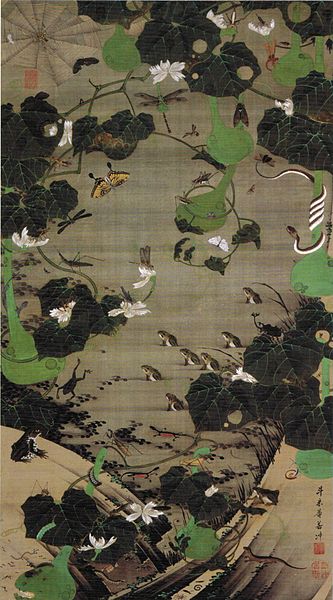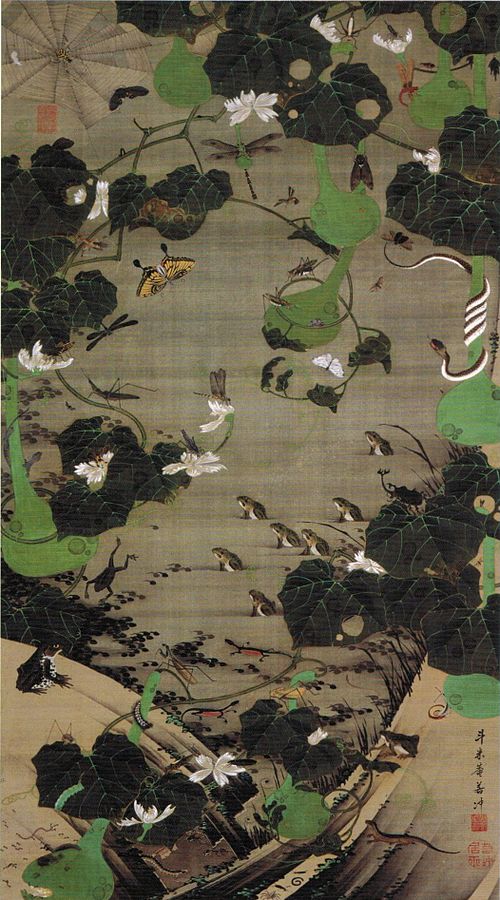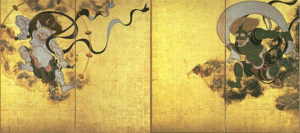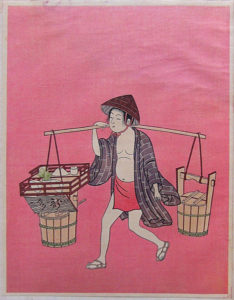
Japanese Artistry: Paintings and Painters
Every culture has its own artistic style that expresses the proud tradition and history of the forever evolving nature of mankind and gives us a glimpse of the treasured past.
Japan has a continued philosophical and cultural belief in the preservation of arts that is quite different from contemporary preservation techniques. Japanese art preservationists give importance to the terms kufū , a practice of creating art using innovation, and kaihen, the transformation of other objects.
Japanese painting, highly regarded as one of Japan’s highly refined forms of visual arts, encompasses many different styles and genres.
Wind God and Thunder God folding screens by Tawaraya Sōtatsu.
Throughout its early history, Japanese painting was mostly adapted from the Chinese style and it displays the contrasting nature of Japanese aesthetics. Western influence on Japanese paintings was introduced later in the 16th century onwards.
Ink wash painting, also known as literati painting, was a common technique used around East Asia in early history. It is a type of brush painting that makes use of black calligraphy ink. Chinese influence is apparent in the repeated use of the technique in earlier works that depict Buddhist religious paintings and used the style similar to the landscape scenes in Chinese literati paintings, paintings of flowers and animals, and calligraphy of ideographs.
 As Japanese painting developed its own distinct style and traditions, the most consistent characteristics of many of the earlier historical paintings are the narrative scenes full of detail and the depiction of images from everyday life. Nihonga, coined during the Meiji period and literally meaning Japanese-style paintings, is a term for Japanese paintings that use the traditional Japanese artistic technique and conventions that are more than a thousand years old. The term was used to differentiate Japanese works from the Western-style paintings known as Yōga. Nihonga paintings were typically drawn on silk or washi paper.
As Japanese painting developed its own distinct style and traditions, the most consistent characteristics of many of the earlier historical paintings are the narrative scenes full of detail and the depiction of images from everyday life. Nihonga, coined during the Meiji period and literally meaning Japanese-style paintings, is a term for Japanese paintings that use the traditional Japanese artistic technique and conventions that are more than a thousand years old. The term was used to differentiate Japanese works from the Western-style paintings known as Yōga. Nihonga paintings were typically drawn on silk or washi paper.
Pond and Insects from the Colorful Realm of Living Beings by Itō Jakuchū.
Some notable Japanese painters include:
Tawaraya Sōtatsu (1643) – the co-founder of the Rimpa school of Japanese painting. He began his career as a fan-painter and later moved on to producing fine decorative paper for calligraphy for the imperial court.
Suzuki Harunobu (1725 – 7 July 1770) – a woodblock print artist in the Ukiyo-e style and a pioneer in producing full-color prints. He used several special techniques and depicted a wide variety of subjects.
The Water Vendor by Suzuki Harunobu.
Itō Jakuchū (1716–1800) – his works consisted mainly of traditional Japanese subjects. With Japan closed to the outside world, he experimented with perspective and other modern stylistic elements.


